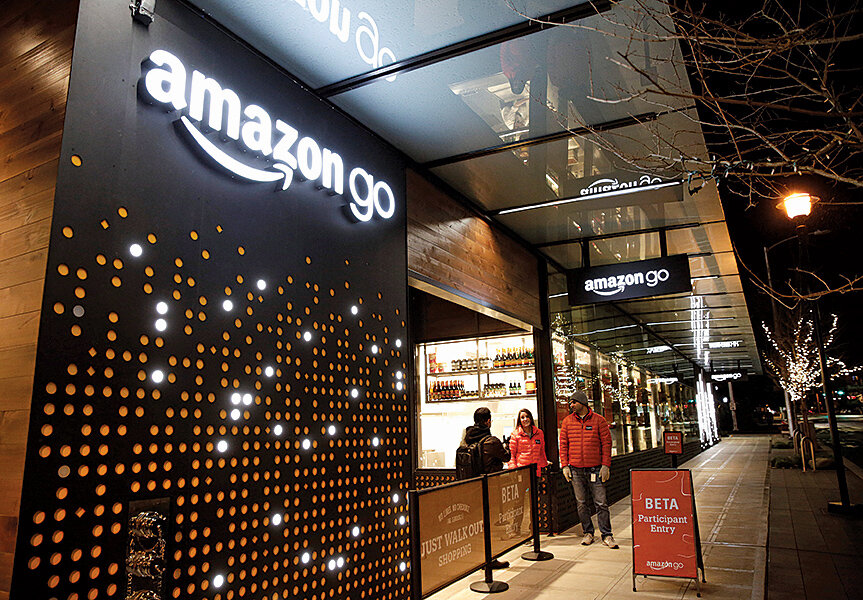As legacy retailers make deep cuts, Amazon promises 100,000 jobs by mid-2018
Loading...
Days after traditional retailers, including Macy’s and Sears, announced dismal sales figures and massive store closings, Amazon is grabbing headlines for the exact opposite reason: It’s growing like crazy.
Over the next year-and-a-half, the e-commerce – and movie-producing, cloud-service-providing, and artificial-intelligence-building – company says it will add 100,000 full-time workers to its 180,000-strong US workforce. This is spectacular growth, considering that it took Amazon the past five years to create upwards of 150,000 US jobs. It’s also an encouraging trend at a time when automation is taking away many low-skilled jobs.
Amazon says that jobs will span experience, education, and skill levels, ranging from positions for engineers and software developers, to entry-level positions, mostly at fulfillment centers that have already been announced in recent months and are under construction in states including Texas, California, Florida, and New Jersey.
“Logistics is extraordinarily important to large retailers, because you’ve got to have that product on the shelf. If you don’t have that product on the shelf, the customer goes somewhere else, and if the customer goes somewhere else, they may never come back” says Bill Thorne, the National Retail Federation’s senior vice president for communications and public affairs.
Increasingly, the e-commerce company has been building warehouses around the country to keep pace with growing online orders and with its promise to deliver packages at supersonic speed. For $99 a year, members of Amazon Prime get free two-day shipping and some free television and movies. And if two days isn’t fast enough, Prime Now, a program available in some cities to Prime members, offers one-hour delivery of some items.
Amazon's guarantee of rushed delivery has shaped consumer expectations and e-commerce industry shipping standards, notes Mr. Thorne. “They’ve helped to evolve this consumer thinking and now they have to figure out ways to maintain their position,” Thorne says. “The only way they think they can do it is to get those fulfillment centers closer to consumers so they can meet that demand.”
To meet consumer demand for fast delivery at lower cost – and to stave off competition that in e-commerce includes only Walmart, which owns only about 3 percent of the online retail sales compared to Amazon’s 74 percent – the online retailer is investing heavily in building out fulfillment and delivery operations.
The Seattle-based retailer built most of the 90 warehouses that it operates across 21 states in the last six years, according to an analysis by J.P. Morgan Chase’s airfreight and surface transportation analyst Brian Ossenbeck, which was available to Barron’s. Last year alone, the retailer was expected to open 30 warehouses, according to Mr. Ossenbeck.
In retail, that is stellar growth. As Jeff Bezos, Amazon’s founder and chief executive muses in the company’s 2015 earnings report to investors: “Twenty years ago, I was driving boxes to the post office in my Chevy Blazer and dreaming of a forklift.” Now, after years of heavily investing all earnings back into the company to the dismay of some of its investors, Amazon in 2015 finally became consistently profitable. In large part this is due to its successful cloud-storage business, Amazon Web Services, for corporate customers. In the third quarter of 2016, Amazon's income tripled to $252 million, or 52 cents per share, as Reuters reports, making it the company’s sixth consecutive profitable quarter.
The company’s future aspirations go beyond e-commerce, though, to areas with some additional job-producing potential. Amazon also is building physical retail stores – such as its new grocery store, Amazon Go, opening in Seattle this year – testing package-delivery by drone, and potentially gearing up to launch is own shipping business, according to The Wall Street Journal.








